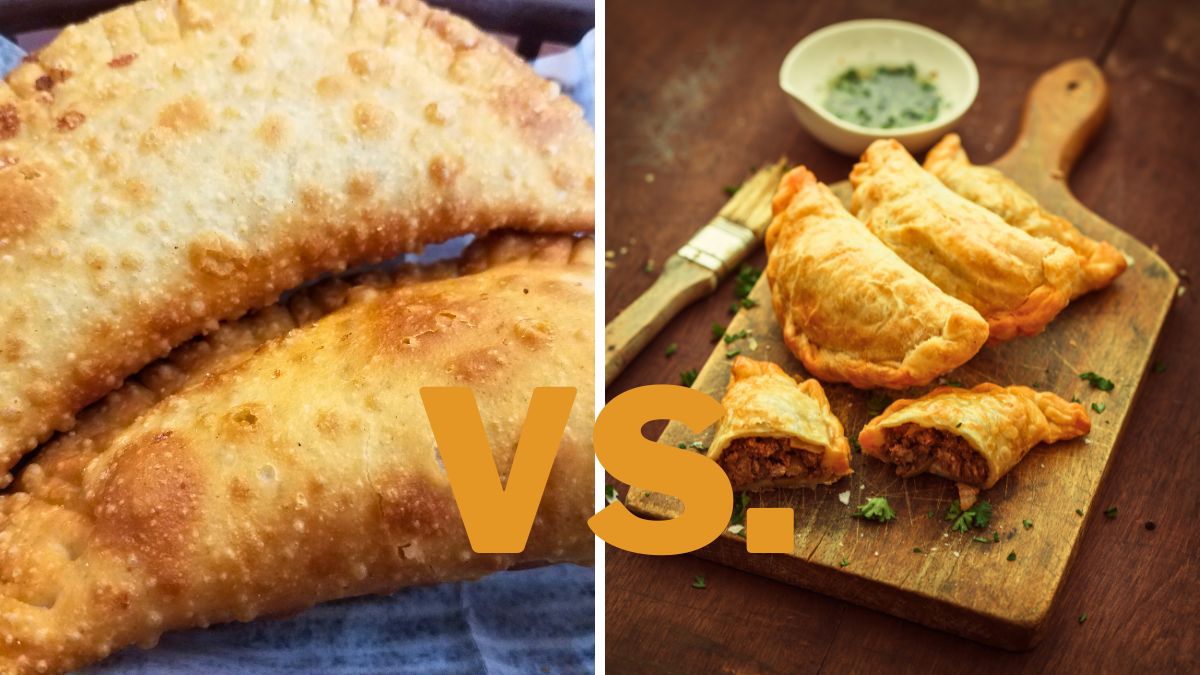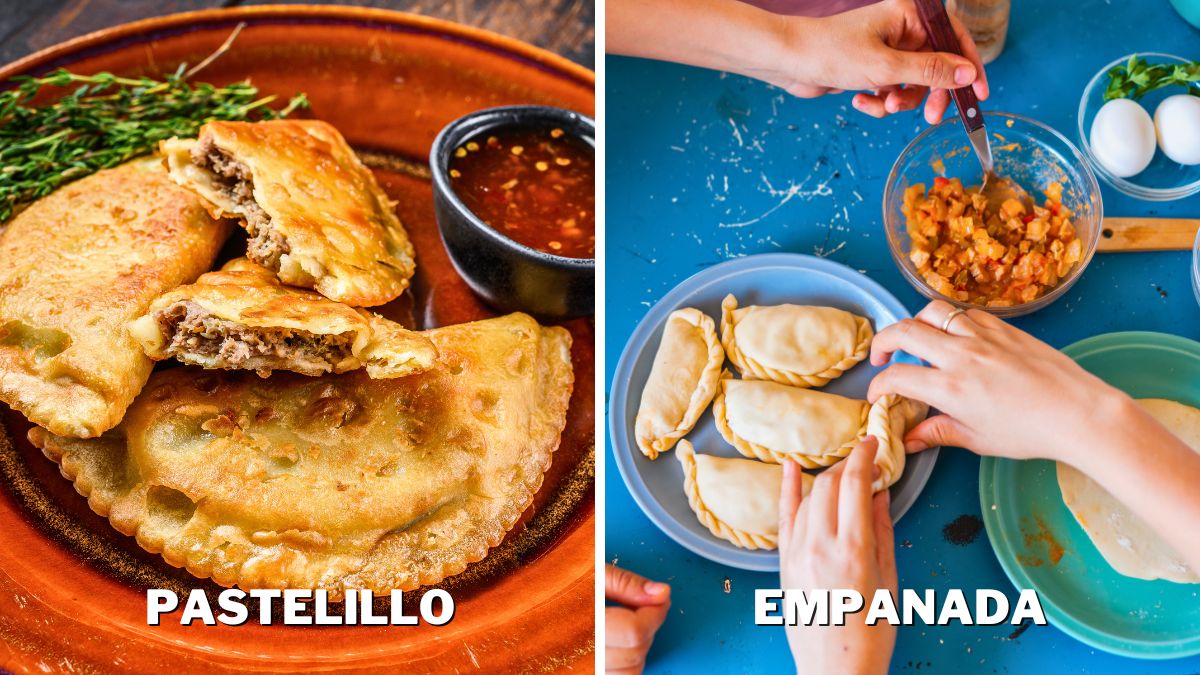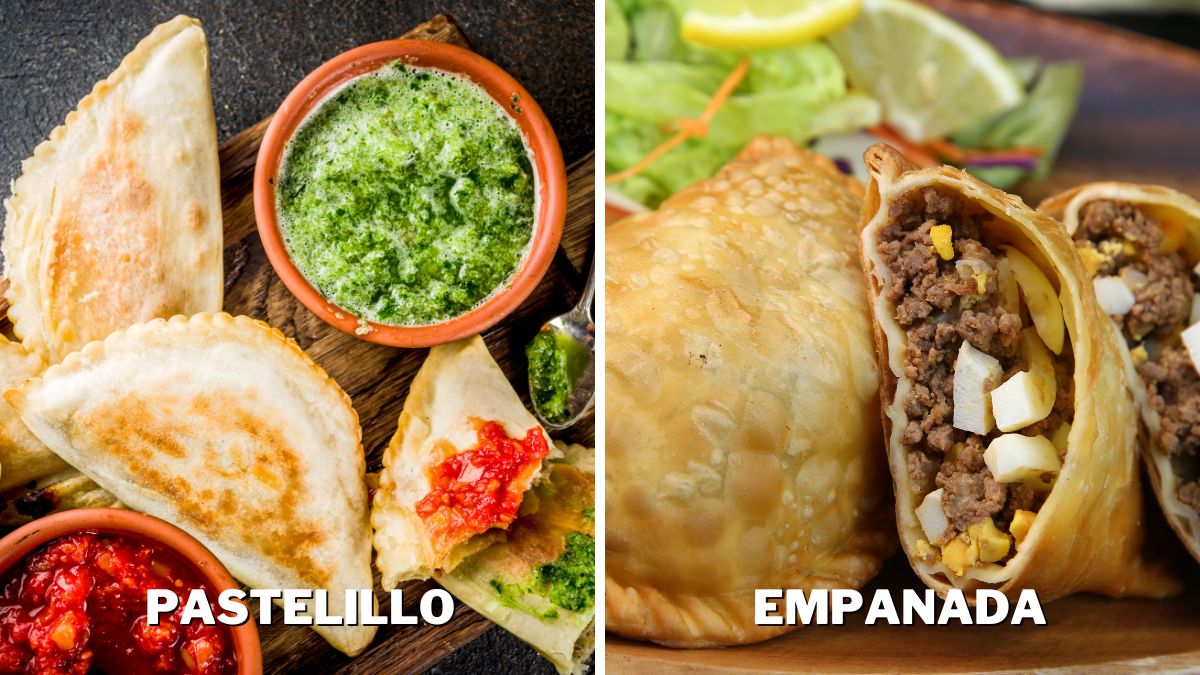Pastelillo vs. Empanada: Differences Between Two Latin Dishes

Empanadas and pastelillo were at the top of my head when I started planning an educational dinner party last week. I do these often — I serve similar dishes and have a lively discussion about their differences with my guests. But all fun aside, knowing the differences between dishes like these is crucial to know which one to get or make, as well as be able to appreciate them properly. So, here’s the recap from last week’s educational dinner party — what are the differences between pastelillo and empanada?
Pastelillos use a thinner, flaky pastry, while empanadas often feature a thicker, bread-like dough. Pastelillos often contain savory fillings, including ground beef, chicken, and cheese, whereas empanadas can have sweet or savory fillings. Pastelillos are usually deep-fried, while empanadas can be baked or fried.
Depending on your preference, you can be more inclined toward empanada or pastelillo, though both are delicious. Since they are similar in appearance, you can easily mistake them and end up disappointed if that isn’t the taste you are after. To make your decision easier the next time you’re in doubt, in this article, I’ll tell you all about the differences between pastelillo and empanada.
What Is Pastelillo?
A pastelillo is a popular Latin American pastry that consists of a thin, flaky dough wrapped around a variety of fillings, typically savory ones. The dough is often made from a mixture of flour, water, and sometimes other ingredients like lard or shortening, which gives it a delicate and crisp texture when fried.
The fillings for pastelillos can vary widely, including seasoned ground beef, chicken, cheese, and a combination of vegetables. They are typically seasoned with spices and herbs, giving them a flavorful and savory taste.
What Is Empanada?
An empanada is a popular Latin American pastry that consists of a folded or stuffed dough pocket filled with various ingredients, which can be either savory or sweet. The word “empanada” itself comes from the Spanish verb “empanar,” which means “to coat with bread” or “to wrap in bread.”
Empanada fillings can be incredibly diverse. Savory versions include seasoned ground beef, chicken, ham, cheese, vegetables, or a combination of these. Sweet empanadas might contain fruits, such as apples, guava, or pumpkin, along with sugar and spices.
Empanadas can be baked or fried, depending on the region and personal preference. Baked empanadas tend to have a slightly lighter, flakier crust, while fried empanadas are often crisper and have a richer flavor.
Pastelillo vs. Empanada: Comparison
Pastelilo and empanada look similar, and if you are a newbie in Latin and Mexican cuisine, you are likely to think that they are the same dish. These two delicacies differ in many key aspects, such as dough, filling ingredients, and cooking methods. Still, they do share a number of similarities, which makes it more difficult to distinguish them.
So, let’s explore the differences!
Their Distinct Origins
Both of these are old traditional Latin dishes, the origins of which are still unknown. They represent a merger of the Spanish, French, and Arabic cuisines, having similar counterparts in Europe and Arabia.
Their transfer to Latin America, where they are most popular today, is associated with the colonization of the continent by the Spanish, Portuguese, and French. Still, it was in Latin America where their recipes were perfected and took the shape they have to this day.
I find the origin speculations of both very interesting and intriguing, and you can base an entire science on them. Sadly, no conclusive statement would determine the exact origin of either.
The original empanada recipe is believed to have originated in the Latin part of Europe, and they are deemed very similar to the Italian calzone. There are also statements that both calzone and empanada are forms of the Arabic meat pie.
Empanadas varied depending on what was available in the specific area, so there are seafood empanadas, meat empanadas, vegetarian, savory, or sweet.
Pastelillos are primarily associated with Puerto Rico, though they, too, were brought to Latin America from Europe. It is believed that they were created by the enslaved people back then as a main dish, while the rich had them as appetizers before the main meal.
Today, these two dishes are staples in Latin American cuisine and are enjoyed in restaurants and regular households. I know that they have a special place in my kitchen and my heart.
Key Ingredients and Preparation Steps that Set Them Apart

Pasteliollos and empanadas may seem the same to the untrained eye, with a slight difference in color and texture. And while this difference may appear minor, it indicates the difference in the ingredients and the preparation methods. Although they may include similar ingredients, the preparation process leads to two unique dishes.
The dough for pastelillos is typically thin and flaky, made from flour, water, and sometimes lard. I avoid the lard and add butter as shortening instead. The fillings are mostly meaty, accompanied by veggies; though the veggies aren’t mandatory, they do improve the taste.
The cheese is a standard element; the meat can be beef or chicken. The filling is cooked before being added to the dough, and then everything is deep-fried until golden brown. I love the texture difference the deep-frying creates with a crispy exterior and creamy interior.
While the dough for pastelillos is pretty much standardized, the empanada dough can vary depending on who’s making it. Generally, it is thicker and bread-like, made from flour, water, fat, and sometimes leavening agents.
Filling-wise, empanadas are much more versatile than pastellilos. You can fill empanadas with veggies, meat (beef or chicken), and cheese, make them vegetarian, or even make a sweet version with a fruit filling.
Empanadas are traditionally baked, but the dough also tolerates frying, so fried empanadas are common.
Similar Appearance and Differences in Size
Pastelilos and empanadas have similar appearances, but the size differences give them out. Pastelillos are smaller than empanadas and are typically served as snacks or appetizers. Empanadas, on the other hand, are larger and often considered a meal in themselves.
Both of these delicious pastries are half-moon shaped, but they differ in texture and color. While pastelillos are golden brown, empanadas are lighter in color due to the differences in cooking. Still, if empanadas are fried instead of baked, they are golden brown too.
Pastelillos often have a rougher texture than empanadas because they are traditionally deep-fried, while empanadas are smoother because they are often baked. Even fried, they are still smoother than pastelillos because they aren’t deep-fried but pan-fried.
While empanadas are known for their crescent shape, they often come in circles or rectangles.
Standardized Taste of Pastelillos and Variety of Empanada Flavors
I love both of these in all their forms, and when it comes to describing their tastes, I must say that both are exquisitely delicious, vibrant, and comforting.
My favorite thing about pastelillos is the texture contrast. The crispy shell of the hot pocket complements the meaty, creamy, rich, and savory interior. Since the filling is more or less standard, these always include the savory element, accompanied by the flavors of the filling, so it may taste more like veggies, chicken, cheese, or beef, but mostly it is a combination of those flavors.
Empanadas do not have a single standardized flavor, and they vary depending on what you fill them with. Although meaty ones are my favorite, the vegetarian and fruit-filled empanadas are also very delicious.
They can range from meaty and cheesy to refreshingly veggie-favored and can also be fruity and sweet!
Serving Pastelillos as a Snack and Empanadas as a Whole Meal

Since pastelillos are basically a snack, they are often served with toppings, sauces, dips, chips, and other snack foods. Pastelillos don’t have a specific serving style or any limitations regarding the way they are served, so you can serve them with your favorite sides or with no sides.
They are very versatile and very easy to combine with other ingredients. I often have them with tacos, chips, and various dips. The vegetarian pastelillo version goes perfectly with more substantial sides and sauces. At the same time, the meaty variations may be better fitter for a lighter and more refreshing pairing.
In any case, they are delicious with whatever you decide to pair them.
Empanadas are a similar story. They are so versatile by themselves that you don’t even have to pair or serve them in any particular way. Empanadas are often sold as street food, and pastelillos too, for that matter, and they are perfectly delicious and entirely complete, even without sides.
I prefer my empanadas with salsa salad or a cheese platter to up the cheesiness and inject some freshness. Still, you can pair them with your favorite sides. Since empanadas can also be sweet and fruity, they go great with sweet sides, such as ice cream, a fruit salad, or a drizzle of syrup.
Variations and Other Names
Pastelillo is more limited in terms of variations than empanadas, but still, it can come with different fillings. So, you can encounter these filled with cheese, beef, chicken, or vegetables or filled with a cheese, veggie, and meat filling. The name is also pretty much uniform, and pastelillos are known as such everywhere, except for some regions where they are also known as pastelitos.
Empanadas are far more variable and come with savory and sweet fillings. They can be meaty, cheesy, vegetarian, or fruity. They can also be baked or fried.
The word “empanada” is consistent; whenever we say empanada, we think of the same dish. Still, they are sometimes called “meat pies” in the US, while in certain Latin American regions, they are also known as “pastels” or “pate.”
Even though I do eat empanadas more often, my educational dinner party made me like pastelillos, too! I’m curious: Which of the two do you like better? Excited to read about your preferences in the comments below!
| Feature | Pastelillo | Empanada |
|---|---|---|
| Origins | Puerto Rico and the Dominican Republic | Spain, Latin American countries |
| Ingredients and Preparation | Thin, flaky dough; deep-fried; savory fillings like ground beef, chicken, and cheese | Thicker, bread-like dough; can be baked or fried; diverse fillings including savory and sweet. |
| Appearance and Size | Small, semi-circular | Various shapes and sizes, including half-moons, rectangles, and circles |
| Taste | Crispy with savory filling | Range of flavors, depending on the preparation method |
| Serving Style | Snacks, appetizers, street food | Mostly a main dish |
| Variations | Different savory and sweet fillings | Numerous regional variations with unique ingredients |
| Other Names | Pastelillo/ pastellito | Empanadas, meat pies, pate, pastel |
